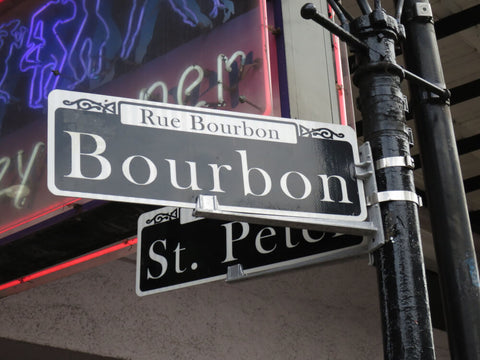Bourbon: A Story of Ingenuity and Resilience
Bourbon whiskey is a well-liked American spirit that has gained widespread popularity and is now commonly found in homes and bars across the globe. The history of bourbon stretches far further back than what's currently in your glass, despite the fact that it's famous for its robust flavor and silky aftertaste. The history of bourbon is inextricably linked to the history of the United States as a whole, and it is a tale that is worthy of investigation.
Although the precise beginnings of Bourbon remain shrouded in mystery, most historians agree that it started to take shape in the latter half of the 18th century. Corn was initially grown as a cash crop by farmers in Kentucky during this time period, while the frontier was still moving westward. Corn was a suitable crop for the difficult terrain of the frontier since it was both simple to cultivate and carry.
Farmers who were producing more maize than they could ever sell turned to distilling it into whiskey as a means of monetizing their surplus. It was common practice to preserve the whiskey in charred oak barrels, which imparted a particular flavor and hue to the beverage. The name "bourbon" was given to the whiskey in honor of Bourbon County in Kentucky, the location where the majority of it was manufactured.
As the consumption of bourbon increased throughout the years, production of the spirit expanded beyond its traditional home state of Kentucky into other states across the United States. In 1964, the United States Congress formally acknowledged bourbon as a product that can only be produced in the United States. Since then, bourbon has been referred to as "America's Native Spirit."
The manufacture of bourbon is subject to particularly stringent guidelines, which is one of the characteristics that sets it apart from other kinds of whiskey. A whiskey can only be called bourbon if it contains at least 51% maize and has been matured in new, charred oak barrels. In addition, bourbon must be produced in the United States. Moreover, it cannot be distilled to a concentration of more than 80 percent alcohol by volume, and it must be bottled at a concentration of at least 40 percent alcohol by volume.
The distillation of bourbon whiskey is an art form that calls for a high level of expertise as well as patience. Following mashing, fermentation, and distillation, the maize is then aged in barrels for a period of time. The maturing process is an important stage that might last anywhere from two to twenty years, depending on the choice of the distiller.

During the maturing process, the whiskey is exposed to the oak barrel, which imparts a variety of flavors, including vanilla, caramel, and spice, into the whiskey. The flavor of whiskey develops a greater depth and range the longer it is allowed to sit in oak barrels. The characteristic silkiness and richness of bourbon are both the result of the lengthy aging process.
With its roots as a frontier whiskey, bourbon has come a long way from its simple beginnings. Today, it has become a widespread phenomenon that is appreciated by individuals from a diverse range of ethnicities and cultural traditions. There are an infinite number of brands and kinds of bourbon, and each one has a taste and personality that are completely distinct from the others.
Bourbon's roots in American history are still deeply ingrained, despite the fact that it's become more popular in modern culture. The story of bourbon is a testament to the ingenuity, creativity, and resiliency of the American spirit. From the early pioneering farmers who first distilled corn whiskey to the modern-day distillers who continue to push the boundaries of what is possible, the history of bourbon is a testament to these qualities.
In conclusion, everybody who is interested in the culture and history of the United States should make an effort to learn more about the long and illustrious history of bourbon. Bourbon has withstood the test of time and continues to be an essential component of our nation's cultural fabric despite having relatively humble beginnings on the frontier and currently holding the position of a global phenomenon. Hence, the next time you raise a glass of bourbon to your lips, spend a few moments to reflect on the tale that lies behind the spirit and the illustrious history that made it possible.